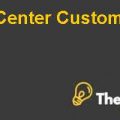Introduction:
The world is continuously evolving rapidly. Technological advancements are continuously occurring around the globe, which is changing the lives of people and their living standards. The innovative introductions in the IT industry that took place few years back are now considered as talk of the past. Technologies that were considered state-of-the-art a few years ago are obsolete now. This gives us a clear image of how tough the competition has become. Also, this competition is now about the survival of the fittest.
The rivalry amongst the industries competing in the IT industry is immense and the companies are adapting to new strategies through which they seek to improve their competency to out run their competitors. Companies are now focusing on how to increase their efficiency to the maximum level and also on ways to cut down cost and increase profits. Almost every company has become automated.
Innovation has become a primary force that effects the growth of these companies and the advancements are successfully contributing in the growth of these companies. In this fast evolving time, the concept of internet of things is a slowly but gradually spreading one. The concept of connecting things to machine like M2M is a beneficent one especially in the field of logistics business. The optimization of resources, updated, accurate and on-hand knowledge of inventory and smooth processing are just some the edges that clouding of logistics can provide to a logistics industry.
Analysis:
Internet of things
Internet of things is a subset of internet of everything. It is basically concept that is extending the usage of internet from the intangible aspects to the tangible ones. It aims to connect the physical objects to the internet for their better usage through the support of internet. Moreover, it isa concept where the focus is on connecting the unconnected.
It is not a brand new concept. It was originated in 2000 and since then it has been evolving slowly, gradually and most importantly consistently. Internet of things is a smarter way of using the technology to the betterment of the people. The people will be more likely to get benefits from the technology as the technology will be providing them with benefits efficiently. It includes smart usage of technology; more consumer-oriented devices to the extent that we can say it will move the concept of customization to a whole new and different level.
The advancement will be more focused towards focusing on the customers on an individual basis. The idea of internet of things is a concept that acts as a subset of internet for everything.Just like B2B and B2C, it is moving towards a machine to machine connection and a machine to person connection. The term ‘things’ in Internet of things isn’t just limited to physical objects but also it has far more wide range(RH Weber, 2010 ).
The studies reflect that by the year 2020 there will be 26 billion devices of the internet of things.This will prove to be a huge addition to the field of Internet of Things. There is a huge demand being experienced for such advancements.
IoT in logistics
When you hear someone saying Internet of Things, mostly the first thing that pops up in your head is electronic device or something that is highly personalized according to our lifestyles.In contrary to one’s imagination, there is more in Internet of Things than just personalized gadgets. IoT has also become the valuable tool in Supply chain or logistics.
Internet Of Things Case Solution
It can be a great help in processing information throughout the transportation, controlling things and enhancing communication channel between two parties throughout the chain. In short, it is a real efficient system in logistics.
IoT has a great impact on logistics, as it has solved the transportation problems effectively. Starting from the manufacturing at warehouse to delivering goods to customers; the channel has never been so improved and organized before. It gives the detailed specifications about products which is necessary for transportation. Through GPS and Radio Frequency Identification, it helps in tracking down the location, monitoring the important detailed like temperature control as it is necessary to know the certain temperature, which is feasible for products and to monitor the data at warehouse(J Gubbi, 2013 )...........................
This is just a sample partial case solution. Please place the order on the website to order your own originally done case solution.












